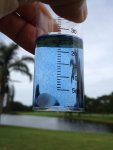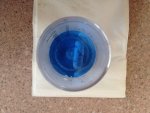- Jun 14, 2012
- 2,668
- Pool Size
- 13500
- Surface
- Vinyl
- Chlorine
- Salt Water Generator
- SWG Type
- CircuPool Edge-40
Is it possible to Accurately do the FAS-DPD test w/ 10ml samples? It seems like you could do this by using a level spoon of the DPD powder and cutting down the reagents and lose precision to perhaps 1ppm. This might be useful when shocking to save on the amount of reagent used.
I tested this tonight on a 12ppm sample and got the correct number using this method.
I tested this tonight on a 12ppm sample and got the correct number using this method.




